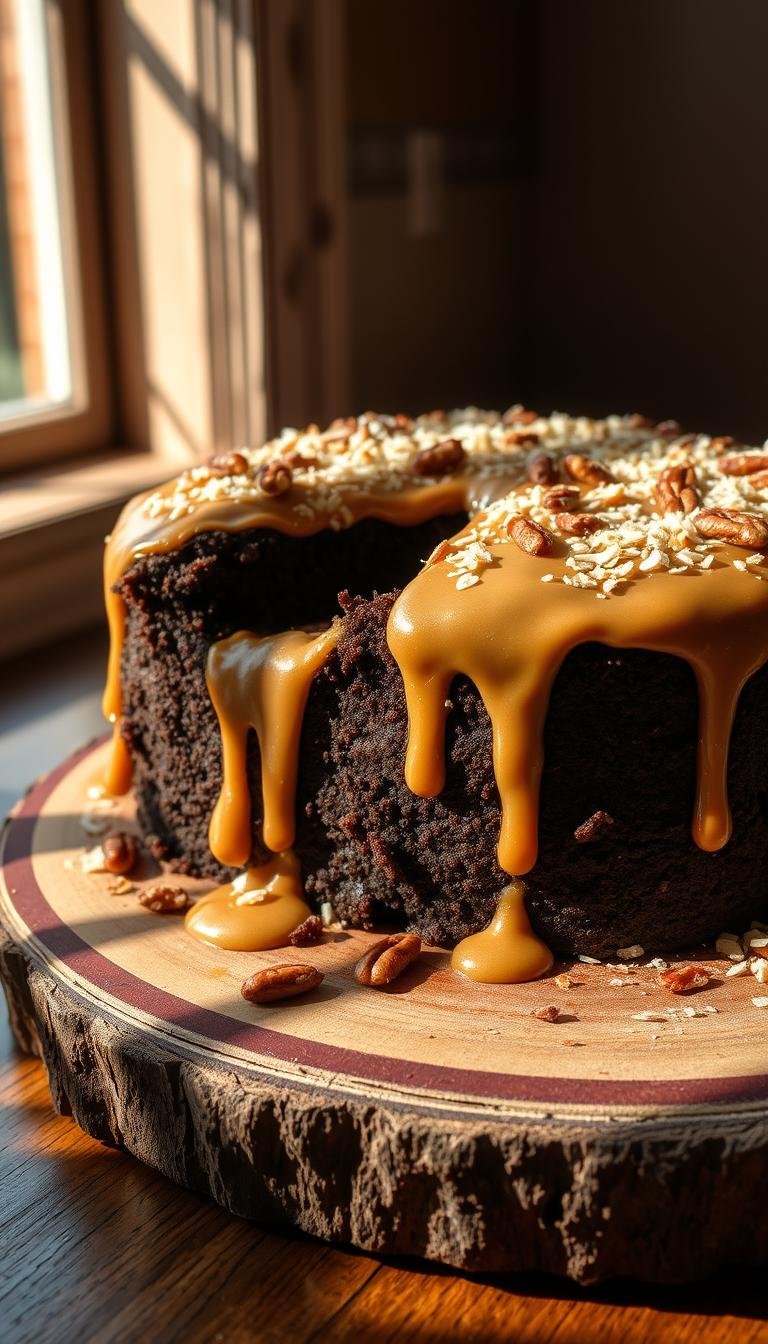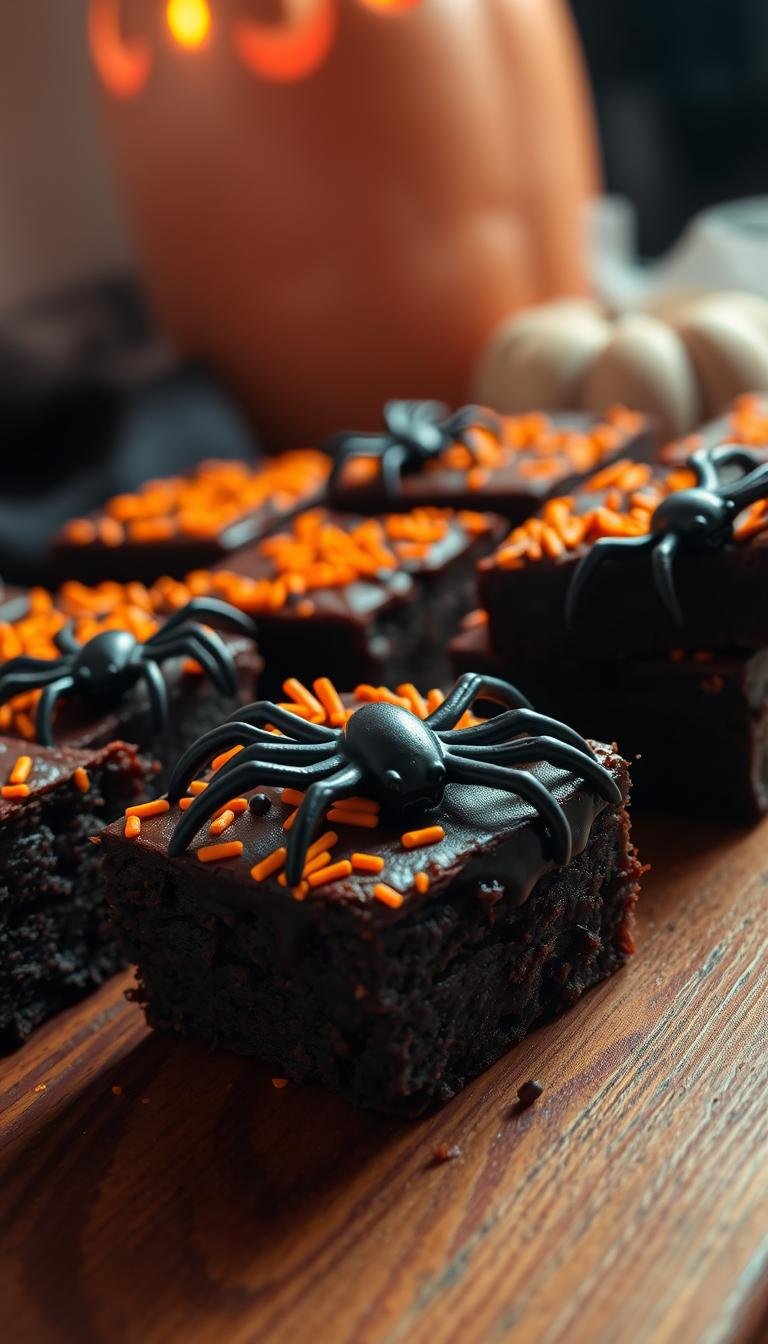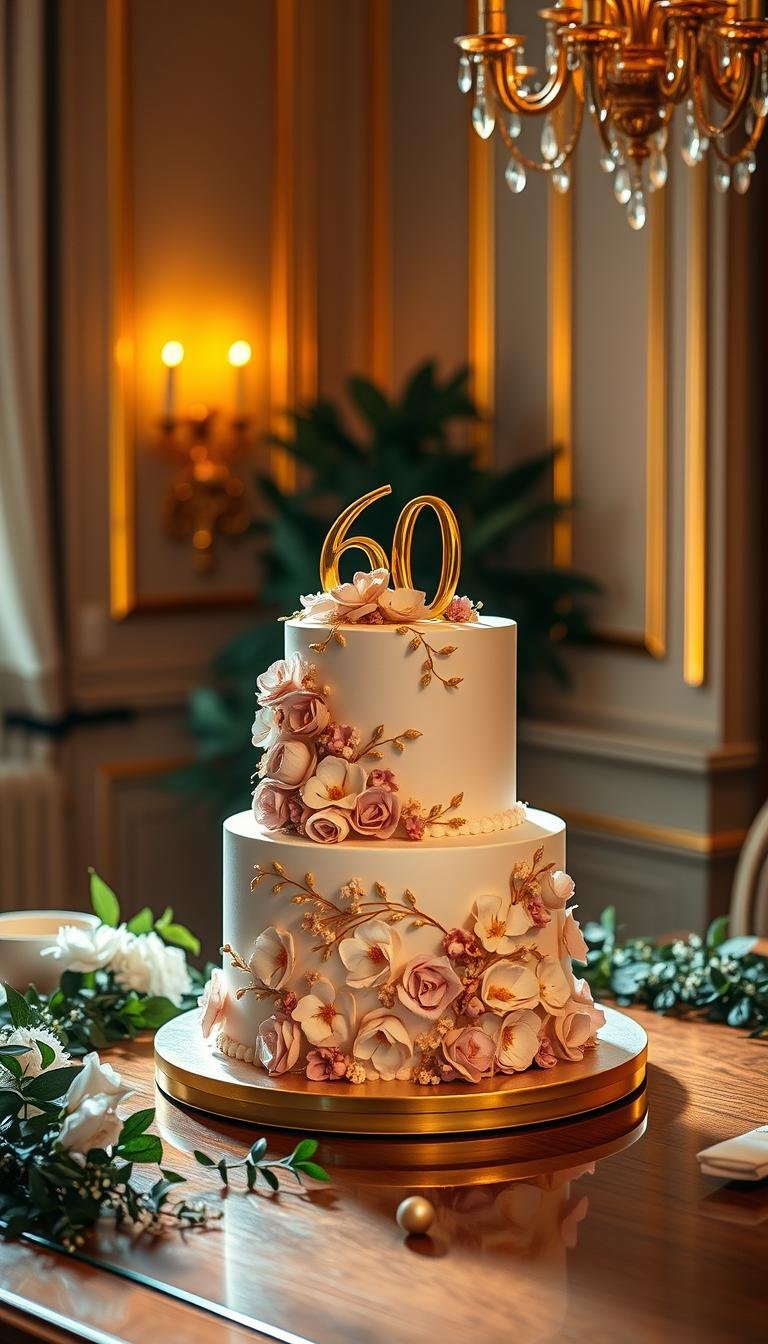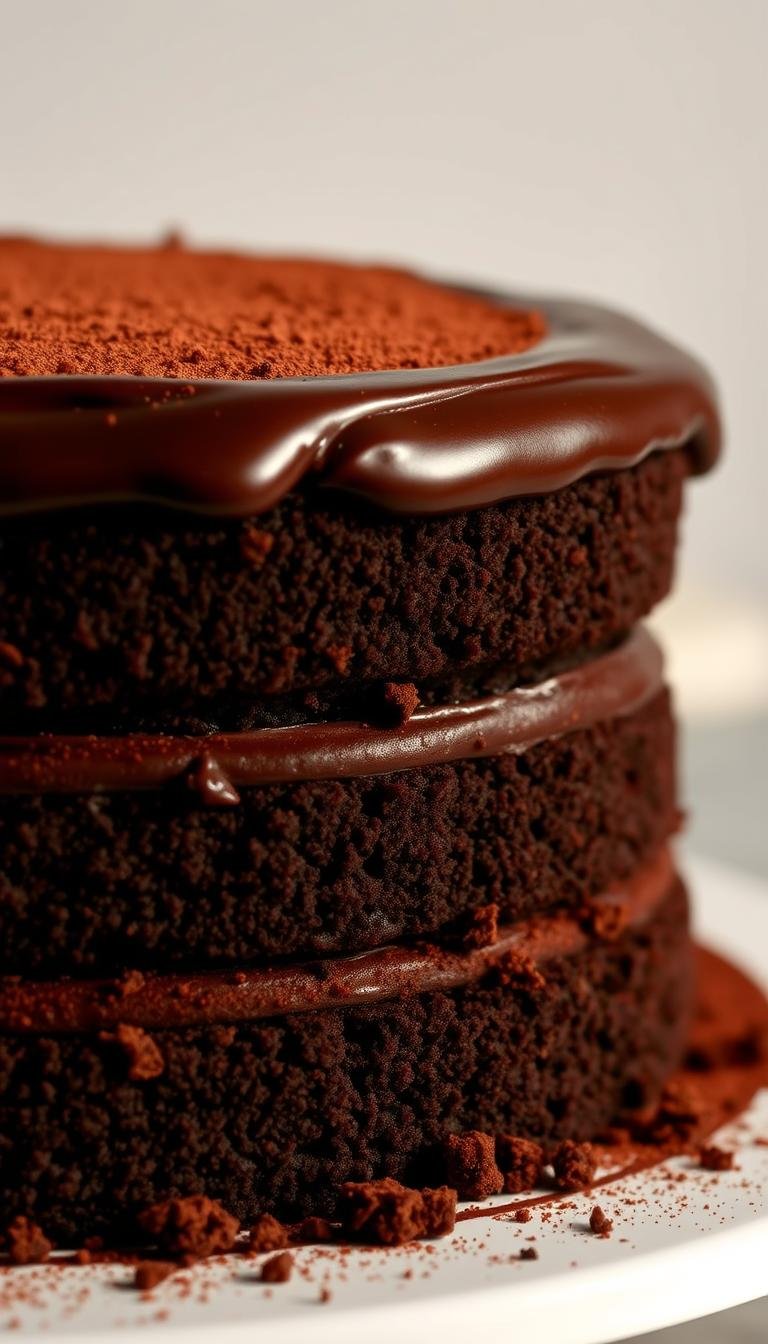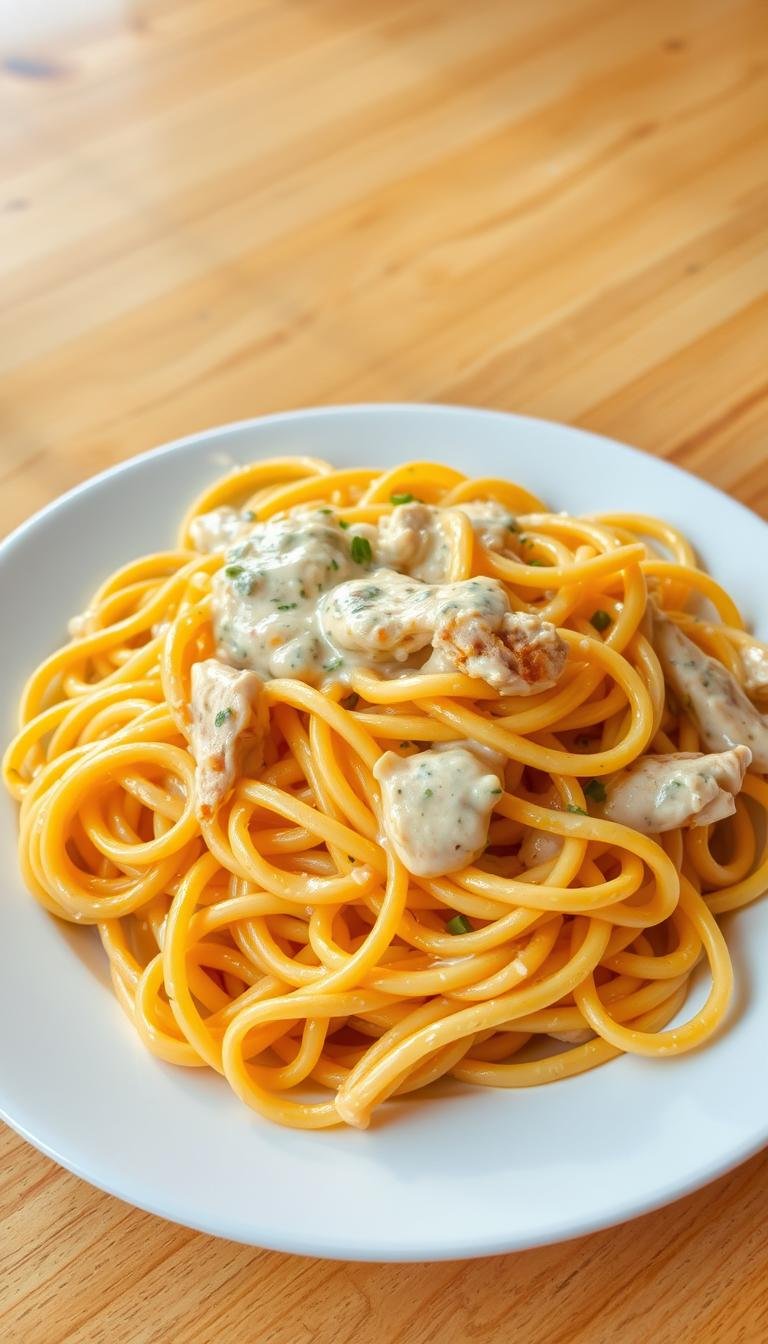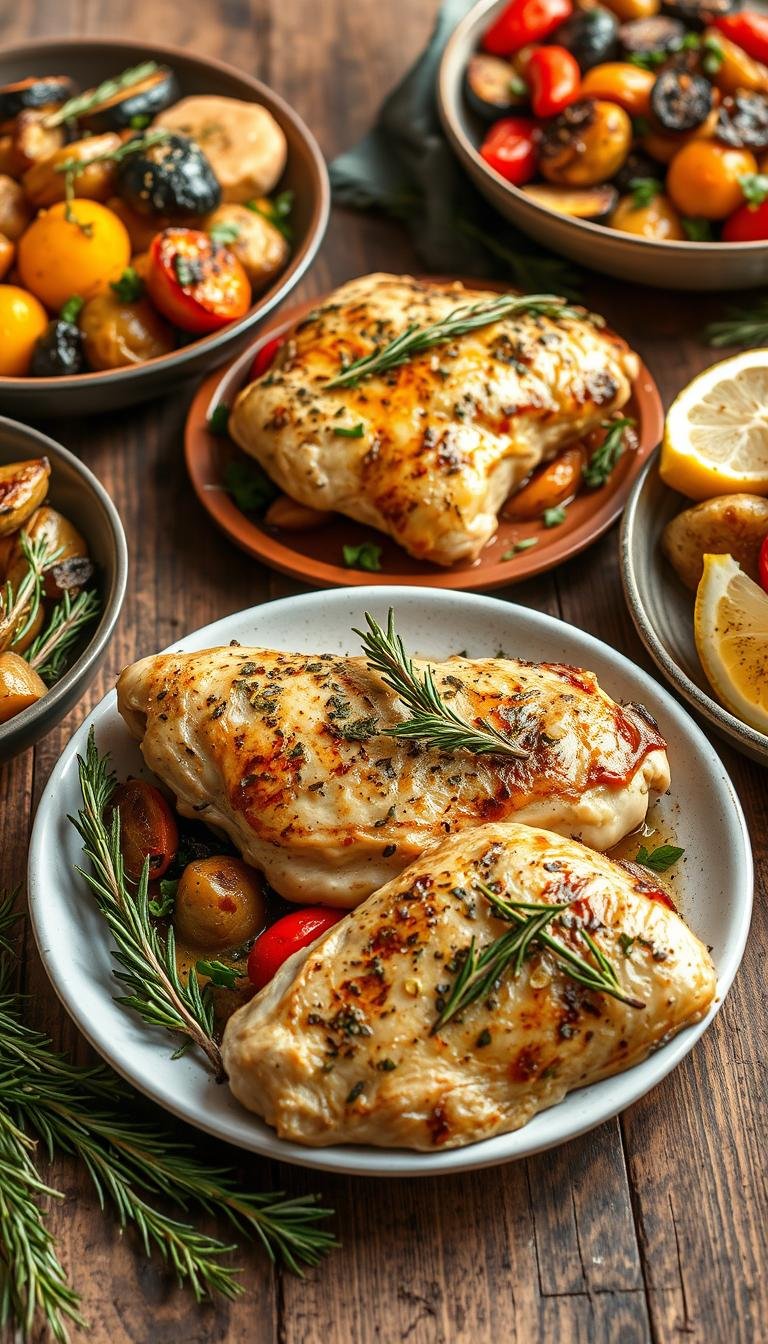Classic German Chocolate Cake Recipe from the Past
One in four home bakers say this layered dessert defined family birthdays in mid-century America. That surprising stat shows how this nostalgic treat shaped party tables and sweet memories.
This version blends a lighter chocolate cake crumb with a rich coconut-pecan frosting that often appears between layers and atop the cake. Two authentic paths lead to success: a cocoa-based batter whisked with boiling water and baked in two 8- or 9-inch pans at 375°F, or a traditional method using melted German sweet chocolate and folded egg whites baked at 350°F in three pans.
The stovetop frosting cooks egg yolks, evaporated milk, granulated and brown sugar, and butter until thick. Stir in vanilla, shredded coconut, and chopped pecans, then cool before spreading for clean slices.
Key Takeaways
- Two proven baking routes yield moist, tender layers or a delicate crumb.
- Use the right pans and oven temperature to match your chosen approach.
- Stovetop coconut-pecan frosting needs cooling for neat assembly.
- Make-ahead and freezing tips simplify busy baking days.
- Bring frostings to room temperature before spreading for best results.
What makes this classic stand out
A tender, lightly cocoa-scented crumb paired with a buttery coconut-pecan topping creates the cake’s signature balance. This contrast gives each slice both a soft crumb and a chewy, caramel-like frosting.
A lighter crumb with rich topping
Traditional versions feature a pale, mildly chocolate layer fully covered in coconut-pecan frosting. The stovetop custard — made from egg yolks, evaporated milk, sugar, butter, and vanilla — caramelizes slightly as it thickens. Stir in shredded coconut and pecans for chew and depth.
From bake-sale favorite to birthday staple
Some families spread coconut-pecan all over. Others coat the sides in chocolate frosting and crown the top with the coconut mix. Both choices highlight mellow chocolate notes so the nuts and coconut can shine.
| Method | Crumb | Finish |
|---|---|---|
| Cocoa + boiling water | Tender, moist | Light crumb; pairs well with full coconut top |
| Separated eggs, folded whites | Airier, taller | Good for layered presentation |
| Family-style finish | Variable | Chocolate sides with coconut crown or all-over coconut |
Let the frosted layers chill briefly so the filling firms and slicing looks neat. Pick the style that matches your memory and enjoy a reliable, nostalgic treat.
German chocolate cake recipe: ingredients and tools
Gathering accurate ingredients and tools is the simplest step toward consistent layers and clean slices. Lay out measured cups, a few mixing bowls, and a reliable oven thermometer before you begin.

Chocolate cake essentials
Dry staples: 1 3/4 to 2 cups flour, 3/4 cup cocoa or 4 oz Baker’s German Sweet Chocolate (melted), 1 1/2 tsp baking powder, 1 1/2 tsp baking soda, and a pinch of salt.
Wet staples: measured eggs, 1 cup buttermilk, 1/2 cup oil or 1 cup softened butter, 2 tsp vanilla, 2 cups or 2 1/4 cups sugar depending on the method, and 1 cup boiling water or 1/2 cup water with melted chocolate. Bake in two 8- or 9-inch cake pans at 375°F or three pans at 350°F for the melted-chocolate path.
Coconut-pecan frosting lineup
Stovetop custard uses egg yolks, 1 can evaporated milk, 1 cup granulated plus 1 cup brown sugar, and 1/2 to 1 cup butter. Finish with 1–2 cups shredded coconut and 1–1.5 cups chopped pecans, plus 1–1.5 tsp vanilla.
Pans, tools, and room prep
- 8- or 9-inch cake pans, parchment rounds, and grease + flour or cocoa-dust for clean edges.
- Mixing bowls, a saucepan for the custard, wire racks to cool, and a toothpick to check doneness.
- Room temperature ingredients matter: butter creams better, eggs blend evenly, and the batter emulsifies for a steady crumb and predictable oven spring.
Step-by-step: bake the chocolate cake layers
Set an efficient rhythm at the start: prep pans, preheat the oven, and gather a clean bowl so each step flows. Grease two 8–9 inch pans, line with parchment rounds, and dust with flour or cocoa to make sure layers release cleanly.
Two batter paths and mixing
For the cocoa method, whisk dry (sugar, flour, cocoa, leaveners, salt) in one bowl and whisk wet in another. Add the cup of boiling water last; the thin batter bakes up tender and even.
For the melted-chocolate path, cream butter and sugar, add yolks, mix in melted chocolate and vanilla, then alternate flour and milk. Fold in whipped whites gently for an airy crumb.
Bake time, doneness, and cooling
Set temperature to 375°F for two-pan cocoa batters and bake about 25–35 minutes. Use 350°F for three-pan melted-chocolate batters and bake 22–30 minutes. Check a few minutes early; a toothpick should come out clean or with a few moist crumbs.
“Run a knife around the edge, rest 5–15 minutes, then invert onto wire racks to cool completely.”
| Method | Temp (°F) | Approx minutes |
|---|---|---|
| Cocoa + boiling water | 375 | 25–35 |
| Melted chocolate, folded whites | 350 | 22–30 |
| Cooling steps | Room temp | 5–15 (in pan), then cool completely |
Make the coconut pecan frosting on the stovetop
Begin the stovetop topping by whisking egg yolks with milk, sugars, and melted butter in a sturdy saucepan. Use a heavy-bottomed pan so heat distributes evenly and the custard won’t scorch.

Build the custard
Combine brown sugar, granulated sugar, butter, egg yolks, and evaporated milk in the saucepan. Cook over medium heat at a low boil, stirring constantly for about 10–12 minutes.
Thickening signs
Watch the mixture carefully. It will turn golden and begin to coat the back of a spoon.
Run a finger through the spoon; if the trail holds, it’s time to remove heat to avoid curdling.
Finish and cool
Immediately stir in vanilla, then fold in shredded coconut and chopped pecans so they stay plump and crunchy.
Let the frosting cool 15–60 minutes until spreadable. A short chill speeds setting, but stop before it firms too hard.
- Tip: Make extra for multi-layer cakes and store covered in the fridge; bring near room temperature before spreading.
Assemble, cool completely, and frost like a pro
Start assembly by placing one cooled round on a sturdy stand and trimming any high dome for a flat base. Leveling makes every cake layer stack cleanly and keeps the finished slice tidy.
Spread a thin chocolate frosting layer first to lock in crumbs. Spoon half the coconut-pecan frosting into the center, leaving about 1/2 inch from the edge so the filling won’t spill when you add the second layer.
Set the second round on top and wrap the whole cake in a smooth chocolate frosting cloak. Use a turntable and a bench scraper for even sides.
Finishing touches and chill time
- Use the back of a spoon or an offset spatula to crown the top with the remaining coconut-pecan frosting; create texture or swirls as you like.
- Make sure the frosting is spreadable, not warm; if it drags, pause and chill the cake a few minutes before continuing.
- Pipe decorative swirls with a Wilton 2D or 1M tip and an Ateco 14″ piping bag for a polished look.
- Chill the assembled cake 60–120 minutes so layers set and slices hold shape. Wipe the knife between cuts and serve slightly cool to highlight vanilla, milk, and pecans.
Pro tips, variations, and storage for make-ahead success
Getting ingredients to the right warmth speeds mixing and yields a steadier crumb. Use room temperature eggs and softened butter so batters emulsify quickly and bake evenly.
Room temperature shortcuts: Submerge cold eggs in warm water for a few minutes. Gently warm chilled buttermilk in the microwave for 10–15 seconds to avoid curdling.
Pan choices and even distribution
Pick two 8–9 inch pans for thicker slices or three pans for more layers and faster baking. Weigh batter to split evenly—about 520–530 grams per pan if you use three.
Altitude and timing adjustments
At high elevation, add 3 tablespoons flour to strengthen the crumb. Watch bake time and the oven closely; small changes in temperature affect rise.
| Focus | When to use | Benefit |
|---|---|---|
| Two 8–9 inch pans | Thicker layers | Shorter prep, taller slices |
| Three pans (weighed) | More frosting ratio | Even rise, tidy stack |
| Altitude tweak | High places | Add flour; adjust minutes |
Make-ahead and freezing
Refrigerate coconut-pecan frosting 1–2 weeks and buttercream 2–3 weeks. Bring fillings to room temperature about an hour before spreading for smooth workability.
Wrap cooled layers tightly and freeze up to three months. You can frost from frozen to reduce crumbs. Whole cakes freeze 2–3 months; thaw slowly in the fridge before serving.
Conclusion
Wrap up by choosing your preferred method—cocoa with boiling water or the melted-sweet-chocolate approach—and gather pans, measured ingredients, and tools.
Both paths deliver a dependable layered dessert: careful pan prep, balanced cups and grams, and steady heat for the stovetop frosting mixture make results repeatable.
Trust doneness cues: springy centers, a clean toothpick, and the need to cool completely before decorating for neat slices.
The coconut-pecan crown adds chew and contrast, while an optional chocolate cloak gives smooth sides and visual drama.
Make-ahead wins: chill frosting to room temperature before use and freeze wrapped layers for quick assembly on party day.
Keep a short checklist—ingredients measured, bowls ready, oven preheated—and experiment with two or three layers and light piping for a personal finish.
With these steps you can confidently make german chocolate cake at home and enjoy a timeless celebration staple.
